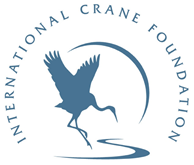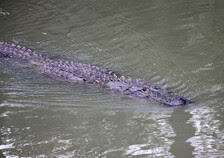Alabama: Whooping Cranes Are Back

Whooping Cranes have returned to Alabama. Where to see them and how you can protect this endangered species.
Decatur, Alabama- Whooping Cranes are back.
“North Alabama is blessed to hold about one-third of the Eastern Migratory Population Whooping Cranes,” said AJ Binney, Whooping Crane Outreach Program Assistant at the International Crane Foundation. “Alabama provides excellent wintering habitat from the vast mudflats on the Flint River to a large number of agriculture fields.”
The first Whooping crane arrived on November 9th at the Wheeler National Wildlife Refuge Headquarters. W7-17 is a wild hatched chick from Necedah National Wildlife Refuge and this is the second year in a row that she was the first Whooping Crane to arrive in Alabama.
Festival of the Cranes will be from January 11th and 12th featuring events in downtown Decatur, AL, and the Wheeler National Wildlife Refuge.
The Whooping Crane has made an impressive recovery through the work of many partners. In the 1940s the entire population dipped to around 30 individuals throughout the world. Now with help from throughout the United States, we have seen the population grow to upwards of 800 individuals. The story of the Whooping Crane is an inspiration for other endangered species, giving hope to all other species that are in decline.
The International Crane Foundation along with many other groups worked together in the Whooping Crane Eastern Partnership to establish another self-sustaining population of Whooping Cranes. Working to create a migration route that travels from Wisconsin to Florida has been a slow process.
“The International Crane Foundation still works raising chicks through different techniques including, parent rearing and direct autumn release, to release chicks into the Eastern Migratory Population,” said Binney. “Across both flyways, International Crane Foundation employee and volunteers work to spread the word about the Whooping Crane, North America’s tallest bird”.
Your help is crucial to the protection of the species. One of the best ways you can help is by being able to identify the Whooping crane. This species stands at 5ft tall, has a white body, red on the top of the head, a black ‘mustache’, and black wingtips.
We ask that if you do see cranes, please view them at a distance, the recommended distance is 200 yards. Whooping Cranes that have arrived in Alabama have traveled a long distance and need to recover from their migration. Please also remember to respect private property by not trespassing.
Whooping Cranes in the Eastern Migratory Population have bands on their legs, allowing researchers to identify individuals. If you are in a place where the bands are visible, please visit the link below to record sightings: https://www.savingcranes.org/report-whooping-crane/
###
The International Crane Foundation works worldwide to conserve cranes and the ecosystems, watersheds, and flyways on which they depend. Learn more about our global conservation efforts at www.savingcranes.org.





